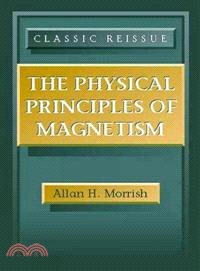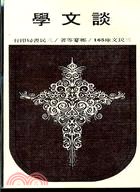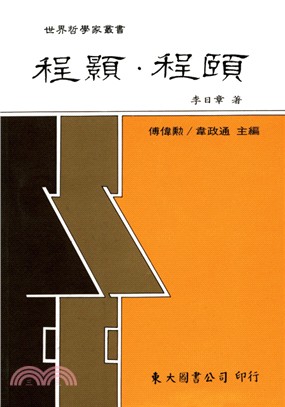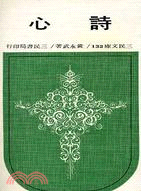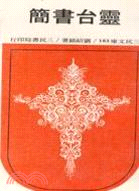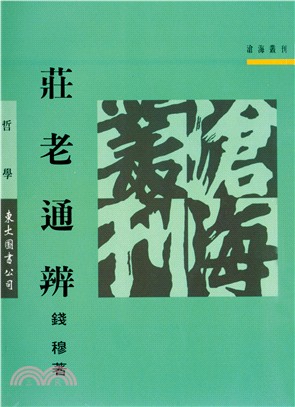The Physical Principles Of Magnetism (An Ieee Press Classic Reissue)
商品資訊
ISBN13:9780780360297
出版社:John Wiley & Sons Inc
作者:Morrish
出版日:2001/01/01
裝訂/頁數:精裝/700頁
商品簡介
The Physical Principles of Magnetism is a classic "must read" for anyone working in the magnetics, electromagnetics, computing, and communications fields.
作者簡介
目次
1. Historical.
2. The Magnetic field Vector H.
3. The Magnetization Vector M.
4. Magnetic Induction, the Vector B.
5. The Demagnetization Factor D.
6. Energy of Interaction.
7. Magnetic Effects of Currents. The Magnetic Shell. Faraday's Law.
8. Maxwell's and Lorentz's Equations.
9. The Magnetic Circuit.
10. Dipole in a Uniform Field.
2. Diamagnetic and Paramagnetic Susceptibilities.
1. Introduction.
2. Review of Quantum Mechanical and Other Results.
Diamagnetism.
3. The Langevin Formula for Diamagnetic Susceptibility.
4. Susceptibility of Atoms and Ions.
5. Susceptibility of Molecules.
Paramagnetism.
6. Curie's Law.
7. Theoretical Derivations of Curie's Law.
8. Quantum Mechanical Treatment.
9. Susceptibility of Quasi-free Ions: the Rare Earths.
10. The Effect of the Crystalline Field.
11. The Iron Group Salts.
12. Covalent Binding and the 3d, 4d, 5d, and 5f-6d Transition Groups.
13. Saturation in Paramagnetic Substances.
14. Paramagnetic Molecules.
15. Paramagnetic Susceptibility of the Nucleus.
3. Thermal, Relaxation, and Resonance Phenomena in Paramagnetic Materials.
1. Introduction.
Thermal Phenomena.
2. Summary of Thermodynamic Relationships.
3. The Magnetocaloric Effect: The Production and Measurement of Low Temperatures.
Paramagnetic Relaxation.
4. The Susceptibility in an Alternating Magnetic Field.
5. Spin-Lattice Relaxation.
6. Spin-spin Relaxation.
Paramagnetic Resonance.
7. Conditions for Paramagnetic Resonance.
8. Line Widths: the Effect of Damping.
9. Fine and Hyperfine Structure: the Spin-Hamiltonian.
10. The Spectra of the Transition Group Ions.
The 3d group ions.
Covalent binding and the 3d, Ad, 5d, and 5f-6d groups.
4/rare earth ions in salts.
Transition ions in various host lattices.
11. The Spectra of Paramagnetic Molecules and Other Systems.
Paramagnetic gases.
Free radicals.
Donors and acceptors in semiconductors.
Traps, F-centers, etc.
Defects from radiation damage.
12. The Three-Level Maser and Laser.
4. Nuclear Magnetic Resonance.
1. Introduction.
2. Line Shapes and Widths.
3. Resonance in Nonmetallic Solids.
4. The Influence of Nuclear Motion on Line Widths and Relaxations.
5. The Chemical Shift: Fine Structure.
6. Transient Effects: the Spin-Echo Method.
7. Negative Temperatures.
8. Quadrupole Effects and Resonance.
9. Nuclear Orientation.
10. Double Resonance.
11. Beam Methods.
5. The Magnetic Properties of an Electron Gas.
1. Statistical and Thermodynamic Functions for an Electron Gas.
2. The Spin Paramagnetism of the Electron Gas.
3. The Diamagnetism of the Electron Gas.
4. Comparison of Susceptibility Theory with Experiment.
5. The De Haas-Van Alphen Effect.
6. Galvanomagnetic, Thermomagnetic, and Magnetoacoustic Effects.
7. Electron Spin Resonance in Metals.
8. Cyclotron Resonance.
9. Nuclear Magnetic Resonance in Metals.
10. Some Magnetic Properties of Superconductors.
6. Ferromagnetism.
1. Introduction.
2. The Classical Molecular Field Theory and Comparison with Experiment.
The spontaneous magnetization region.
The paramagnetic region.
Thermal effects.
3. The Exchange Interaction.
4. The Series Expansion Method.
5. The Bethe-Peierls-Weiss Method.
6. Spin Waves.
7. Band Model Theories of Ferromagnetism.
8. Ferromagnetic Metals and Alloys.
9. Crystalline Anisotropy.
10. Magnetoelastic Effects.
7. The Magnetization of Ferromagnetic Materials.
1. Introduction.
2. Single-Domain Particles.
Critical size.
Hysteresis loops.
Incoherent rotations.
Some experimental results.
Other effects.
3. Superparamagnetic Particles.
4. Permanent Magnet Materials.
5. Domain Walls.
6. Domain Structure.
7. The Analysis of the Magnetization Curves of Bulk Material.
Domain wall movements.
Coercive force.
Initial permeability.
Picture frame specimens.
The approach to saturation.
Remanence.
Nucleation of domains: whiskers.
Barkhausen effect.
Preisach-type models.
External stresses.
Minor hysteresis loops.
8. Thermal Effects Associated with the Hysteresis Loop.
9. Soft Magnetic Materials.
10. Time Effects.
11. Thin Films.
8. Antiferromagnetism.
1. Introduction.
2. Neutron Diffraction Studies.
3. Molecular Field Theory of Antiferromagnetism.
Behavior above the Neel temperature.
The Neel temperature.
Susceptibility below the Neel temperature.
Sublattice arrangements.
The paramagnetic-antiferromagnetic transition in the presence of an applied magnetic field.
Thermal effects.
4. Some Experimental Results for Antiferromagnetic Compounds.
5. The Indirect Exchange Interaction.
6. More Advanced Theories of Antiferromagnetism.
The series expansion method.
The Bethe-Peierls-Weiss method.
Spin waves.
7. Crystalline Anisotropy: Spin Flopping.
8. Metals and Alloys.
9. Canted Spin Arrangements.
10. Domains in Antiferromagnetic Materials.
11. Interfacial Exchange Anisotropy.
9. Ferrimagnetism.
1. Introduction.
2. The Molecular Field Theory of Ferrimagnetism.
Paramagnetic region.
The ferrimagnetic Neel temperature.
Spontaneous magnetization.
Extension to include additional molecular fields.
Triangular and other spin arrangements.
Three sublattice systems.
Ferromagnetic interaction between sublattices.
3. Spinels.
4. Garnets.
5. Other Ferrimagnetic Materials.
6. Some Quantum Mechanical Results.
7. Soft Ferrimagnetic Materials.
8. Some Topics in Geophysics.
10. Resonance in Strongly Coupled Dipole Systems.
1. Introduction.
2. Magnetomechanical Effects.
3. Ferromagnetic Resonance.
4. Energy Formulation of the Equations of Motion.
5. Resonance in Ferromagnetic Metals and Alloys.
6. Ferromagnetic Resonance of Poor Conductors.
7. Magnetostatic Modes.
8. Relaxation Processes.
Relaxation via spin waves in insulators.
Relaxation via spin waves in conductors.
Fast relaxation via paramagnetic ions.
Slow relaxation via electron redistribution.
9. Nonlinear Effects.
10. Spin-Wave Spectra of Thin Films.
11. Electromagnetic Wave Propagation in Gyromagnetic Media.
12. Resonance in Unsaturated Samples.
13. Ferrimagnetic Resonance.
14. Antiferromagnetic Resonance.
15. Nuclear Magnetic Resonance in Ordered Magnetic Materials.
16. The Mossbauer Effect.
Appendix I. Systems of Units.
Appendix II. Demagnetization Factors for Ellipsoids of Revolution.
Appendix III. Periodic Table of the Elements.
Appendix IV. Numerical Values for Some Important Physical Constants.
Author Index.
Subject Index.
主題書展
更多書展今日66折
您曾經瀏覽過的商品
購物須知
外文書商品之書封,為出版社提供之樣本。實際出貨商品,以出版社所提供之現有版本為主。部份書籍,因出版社供應狀況特殊,匯率將依實際狀況做調整。
無庫存之商品,在您完成訂單程序之後,將以空運的方式為你下單調貨。為了縮短等待的時間,建議您將外文書與其他商品分開下單,以獲得最快的取貨速度,平均調貨時間為1~2個月。
為了保護您的權益,「三民網路書店」提供會員七日商品鑑賞期(收到商品為起始日)。
若要辦理退貨,請在商品鑑賞期內寄回,且商品必須是全新狀態與完整包裝(商品、附件、發票、隨貨贈品等)否則恕不接受退貨。



